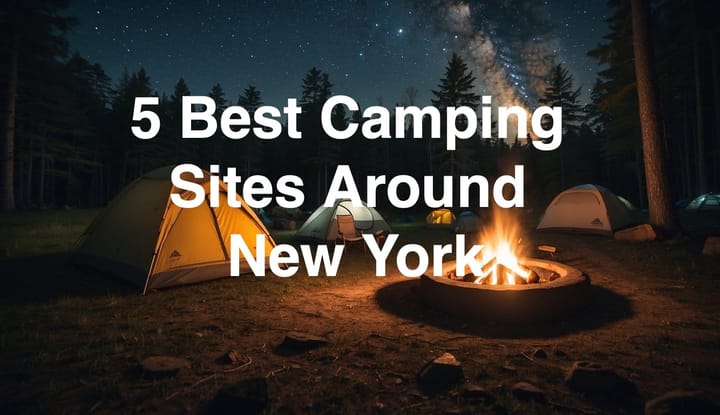Tent Camping
Tent camping offers a unique opportunity to connect with the outdoors. It's an accessible outdoor activity that can be enjoyed by people of all ages and skill levels.
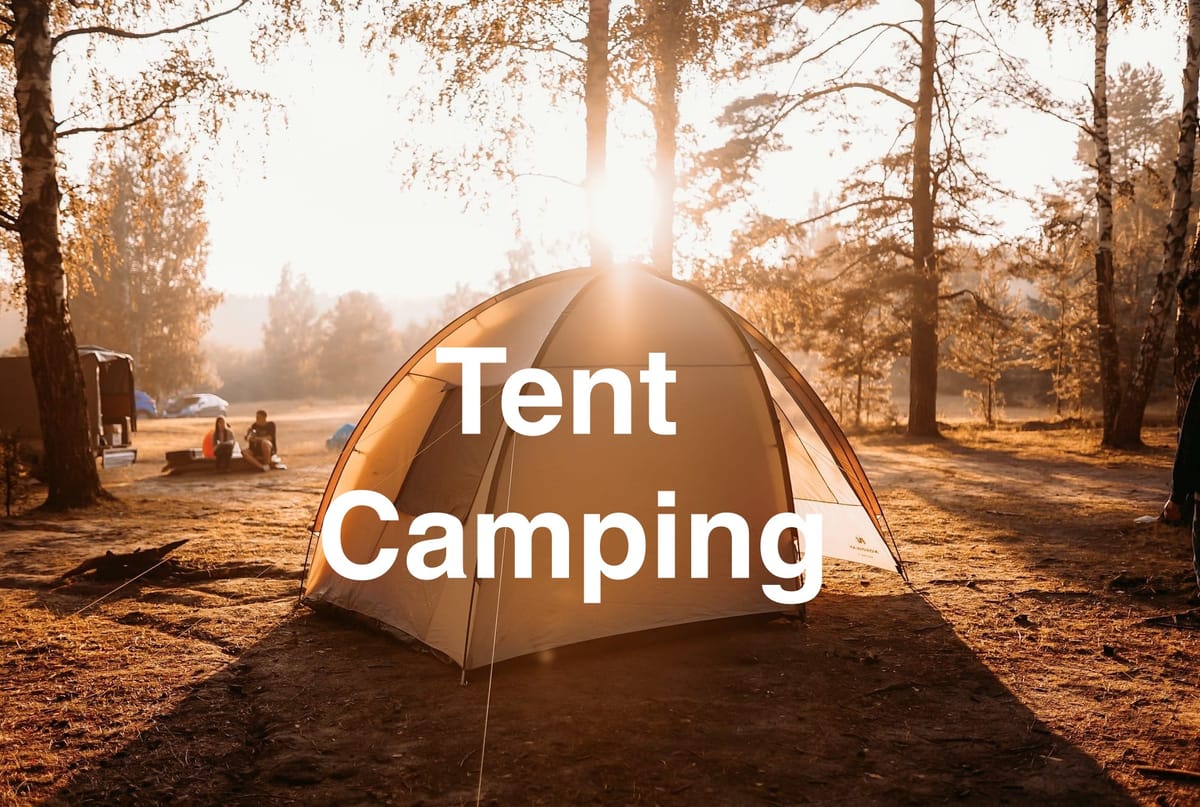
With the right tent, you can transform any natural landscape into a home away from home.
Whether you're a solo adventurer or part of a family or group, the experience of falling asleep under the stars and waking up to the serene sounds of nature is unmatched.
Selecting a suitable tent is crucial for a comfortable and safe camping experience.
Tents come in various sizes, shapes, and with different features to cater to your specific camping needs.
Key considerations include the environment you'll be camping in, the number of campers, and your personal preferences regarding space and comfort.
Modern tents also provide various amenities and accessories that can enhance your outdoor experience, ranging from built-in lighting to storage options.
Key Takeaways
- A well-chosen tent elevates the camping experience, providing comfort and protection.
- Tent features and proper setup are essential for hassle-free camping.
- Regular maintenance ensures the longevity of your tent, maximizing your investment.
Choosing the Right Tent
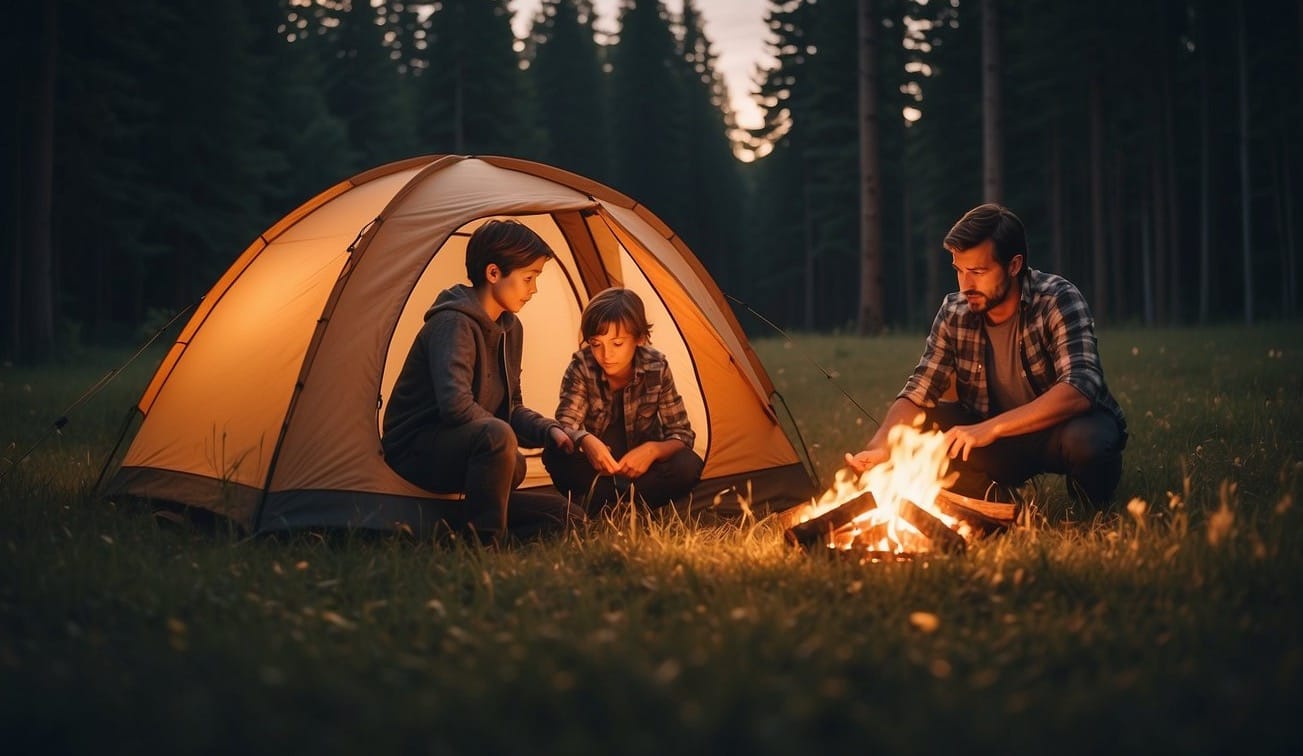
Selecting an appropriate tent is essential for ensuring both comfort and functionality on your camping trips.
Key factors to consider include the tent's size and space, materials for durability, and the type appropriate for your trip.
Size and Space Considerations
When determining tent size, consider not only the number of people sharing the tent but also the need for additional space.
An upgrade in tent capacity by two may enhance comfort for every person. For example, a four-person tent often suits a couple, while a six-person tent provides ample room for a family of four with extra space for gear.
- Floor space: Look for adequate square footage to accommodate sleeping bags and additional gear.
- Headroom: Taller tents with more height allow for easier movement inside the tent.
- Pockets and vestibules: Storage options for organizing your essentials are practical features.
Consider a tent with a vestibule for gear storage separate from the sleeping area, and look for models with internal pockets to keep small items within reach.
Material and Durability
Choosing the right materials enhances the durability and weather resilience of a tent.
- Polyester tents are UV resistant and retain color well.
- Tent poles made of aluminum are lighter and more durable compared to fiberglass.
Look for tents with reinforced stitching and quality zippers.
Invest in a tent made of high-quality materials within your budget to ensure value over time. For car campers, a slightly heavier, more durable tent is usually appropriate, whereas backpacking tents should be lightweight.
Tent Types for Different Trips
Select a tent based on the predominant weather conditions you’ll encounter.
- Three-season tents are versatile for spring, summer, and fall, generally lightweight, and often feature mesh panels for ventilation.
- Four-season tents are designed for colder weather and can withstand snow and high winds.
Car camping tents offer more space and comfort but are too heavy for backpacking. Conversely, ultralight tents are suitable for backpacking, focusing on minimal weight.
Before purchasing, research the specific dimensions and weight of the tent to ensure it meets the requirements of your trip, whether you are a car camper or a backpacker.
Tent Features and Accessories
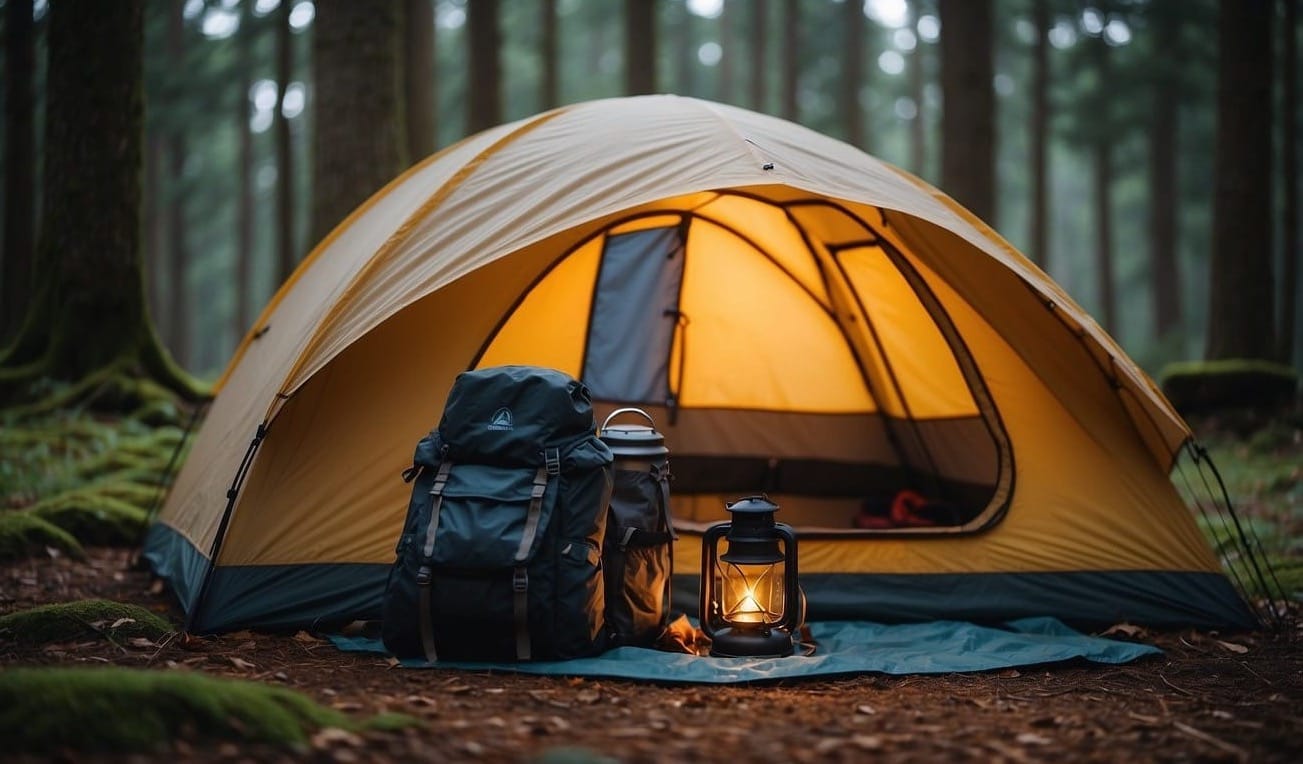
When selecting a tent, considering the specific features and accessories can greatly enhance your camping experience.
It's important to focus on both protection from the elements and the livability aspects that will make your outdoor stay comfortable.
Ventilation and Weather Resistance
Ventilation is crucial in a tent as it reduces condensation and maintains a comfortable air flow.
Look for tents with multiple mesh panels or windows which also serve as a barrier against insects.
In terms of weather resistance, a quality rainfly is a must-have. It acts like an umbrella for your tent, keeping rain and moisture out.
A rainfly with a good polyurethane coating can provide reliable weatherproofing.
The dome shape of a tent is not just for aesthetics; it helps deflect wind, making it stable in a storm.
Moreover, strong poles and secure stakes are essential, along with taut guylines for added stability during harsh weather conditions.
- Ventilation: Ensure ample mesh panels or windows for air flow.
- Rainfly: Opt for one with a substantial polyurethane coating.
- Poles and Stakes: Choose robust materials for resilience in the wind.
- Guylines: Have ample guylines for extra stability in a storm.
Extra Comfort and Livability Features
Your tent’s livability features can vastly improve your outdoor experience.
Peak height and vertical side walls increase space, allowing you to move around more comfortably.
Tents with a vestibule provide extra storage options for gear, keeping items dry and organized, while also acting as a mudroom.
Some models come with built-in awning which makes a good communal space.
Extra features such as a porch light for visibility at night, multiple doors for easy entry and exit, and mesh pockets for keeping small items within reach all contribute to a more convenient and enjoyable camping trip.
- Peak Height/Side Walls: Look for vertical designs for spacious interiors.
- Vestibule/Awning: Essential for storage and additional sheltered space.
- Porch Light/Doors: For better night-time visibility and easier access.
- Mesh Pockets: Keep essential items handy and organized.
Setting Up Your Tent
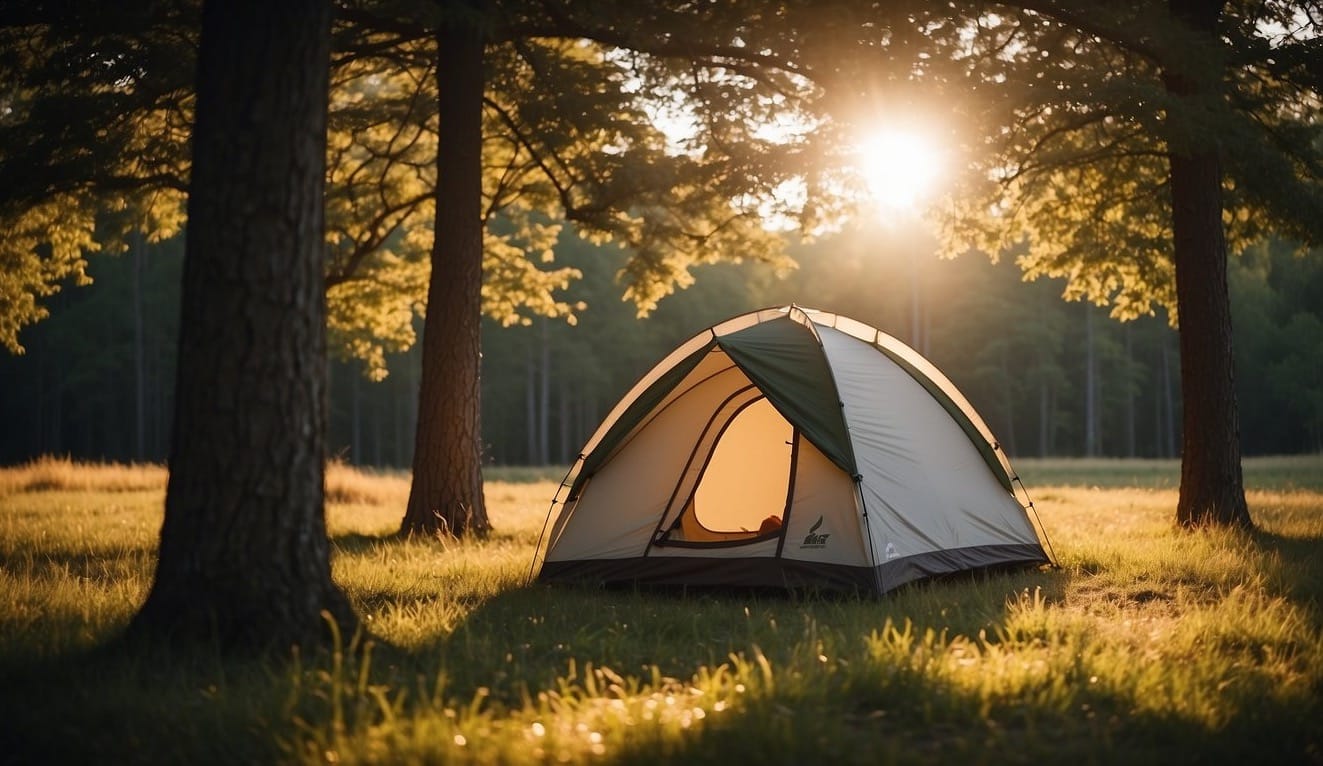
Setting up your tent is a straightforward process that will create a comfortable and safe environment for your outdoor adventures.
The right approach ensures durability and stability for the tent, regardless of your camping destination.
Step-by-Step Setup Procedures
- Choose the Campsite: Select a flat area free of sharp objects, like rocks and sticks, that could damage the tent or cause discomfort while you sleep.
- Prepare the Site: Clear the designated area of debris and lay down a groundsheet to protect the bottom of your tent.
- Lay Out the Tent: Unfold the tent on top of the groundsheet, ensuring the doors are facing the direction you desire.
- Assemble the Poles: Connect your tent poles, which will typically snap together due to elastic cord running through their centers.
- Attach the Poles to the Tent: Slide the poles through the tent's sleeves or hook them to the clips, depending on your tent's design.
- Raise the Tent: Lift the tent by the poles, which will often naturally arch and slot into place at the corners of the tent, giving the structure its shape.
- Secure the Tent: Peg out the corners of the tent, pulling them taut to create a sturdy setup.
- Attach the Rainfly: If your tent has a separate rainfly, place it over the tent and secure it to the poles or tent corners.
Tips for Secure Tent Pitching
- Check the weather conditions and adjust the orientation of your tent to shield against prevailing winds or to maximize natural light.
- When securing the tent, use all guy lines provided to add extra stability, especially in windy conditions.
- For tents with non-freestanding structures, it's crucial to stake them out properly, as the tent's form relies partly on the tension created by the stakes.
- Regularly inspect and maintain your tent poles, as they are the backbone of the structure, and damage can lead to malfunction or collapse.
- Opt for a tent with a simple, intuitive setup to reduce hassle and time spent pitching the tent, ensuring more time for relaxation and enjoyment.
- Tents with aluminum poles typically offer a balance between weight and sturdiness, making them ideal for various camping situations.
- Practice setting up your tent at home to familiarize yourself with its dimensions and components, thereby enhancing ease of use when out in the field.
Choosing the Best Tent for Specific Needs

When selecting a tent, your choice should meet the specific requirements of your camping style and group size to ensure comfort and functionality in the outdoors.
Families and Group Camping Options
For family or group camping, where space and convenience are paramount, consider a spacious 6-person tent.
This size is ideal for a family of four, offering extra room for movement and storage of gear.
A nylon tent provides durability and a lighter weight, suitable for car camping where transport to the site is less of a concern.
If cost is a significant factor, look for a budget tent that still offers a large vestibule space, vital for storing shoes and backpacks. For instance:
- Spacious: Look for tents labeled as one or two sizes larger than your group. A 6-person tent is comfortable for a family of four plus gear.
- Material: Nylon tents are typically more affordable and resistant to wear.
- Features: Consider tents with room dividers for privacy and large doors for easy access.
Solo and Ultralight Backpacking Selection
For solo trips or ultralight backpacking, focus on the best backpacking tents that are lightweight, compact, and durable.
Opt for a 1-person or a small 2-person tent if you prefer a little extra room. The material of choice is often a lightweight nylon or polyester to minimize pack weight.
An integrated mesh is crucial to enhance breathability while keeping insects out. Keep an eye on:
- Weight: A tent that weighs around 2-3 pounds is ideal for long treks.
- Ease of Setup: Look for tents with a simple, efficient setup to save time and hassle.
- Durability: Ensure the tent materials and poles are built to withstand varied conditions.
Maintaining and Caring for Your Tent
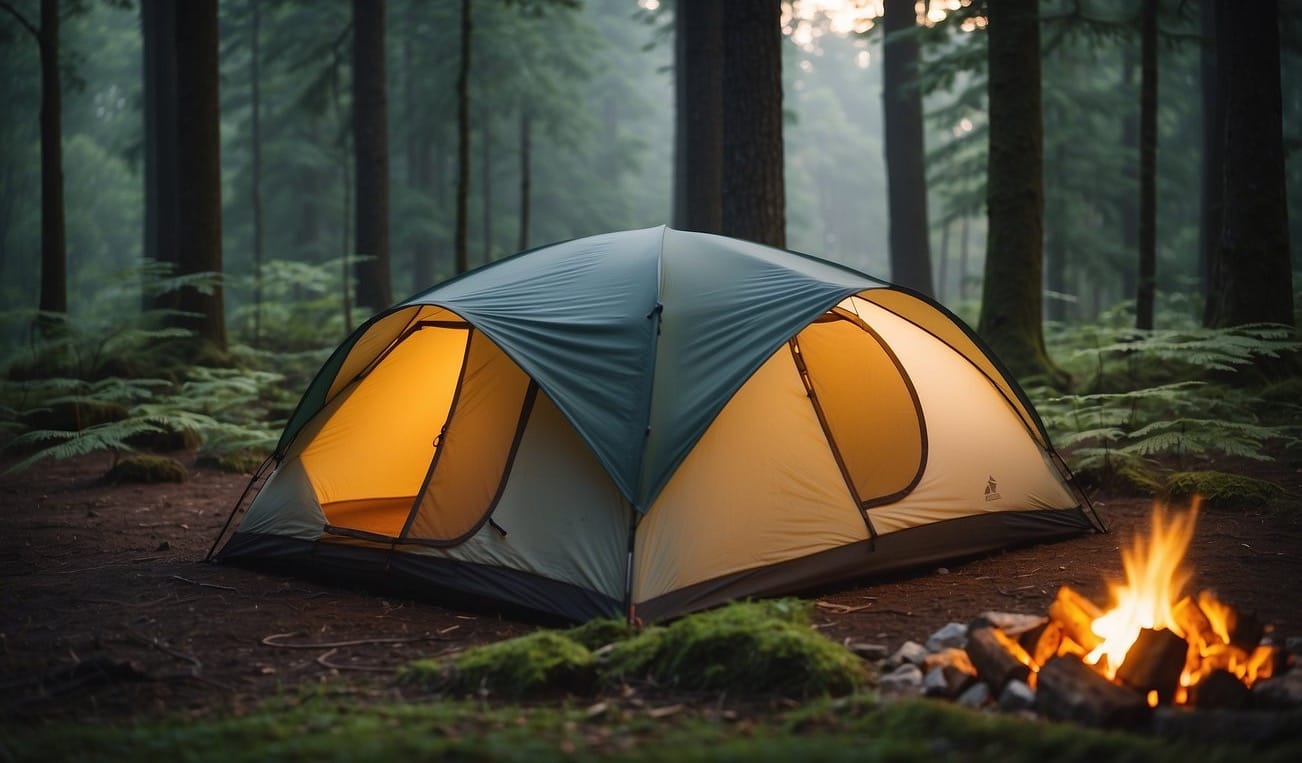
Proper upkeep of your tent is essential for extending its life and optimizing its performance in outdoor conditions. Your attentiveness to cleaning, weatherproofing, and correct storage will ensure its durability and weather resistance.
Cleaning and Storage Best Practices
Cleaning Your Tent:
- After Each Trip: Brush off any loose dirt or debris and wipe down with a damp cloth.
- Deep Clean: Only when necessary, use a mild soap and lukewarm water, rinsing thoroughly.
- Never Machine Wash: This can damage the material and protective coatings.
Weatherproofing Your Tent:
- Seam Sealing: Regularly check seams and apply seam sealer to any areas showing wear.
- Refresh Coatings: If the material starts to stick or flake, clean and apply a thin layer of tent-specific polyurethane coating.
- Protect from UV Damage: Whenever possible, set up in shaded areas to minimize exposure to UV rays. These rays can degrade quality materials over time.
Storing Your Tent:
- Dry Completely: Ensure your tent is fully dry before storage to prevent mildew and rot.
- Loose Roll or Stuff: Avoid folding along the same lines repeatedly, which can stress the fabric. Instead, loosely roll or stuff your tent.
- Cool, Dry Place: Store in a cool, dry location away from direct sunlight to protect from weathering and keep the materials in top condition.
Innovative Trends in Tent Camping
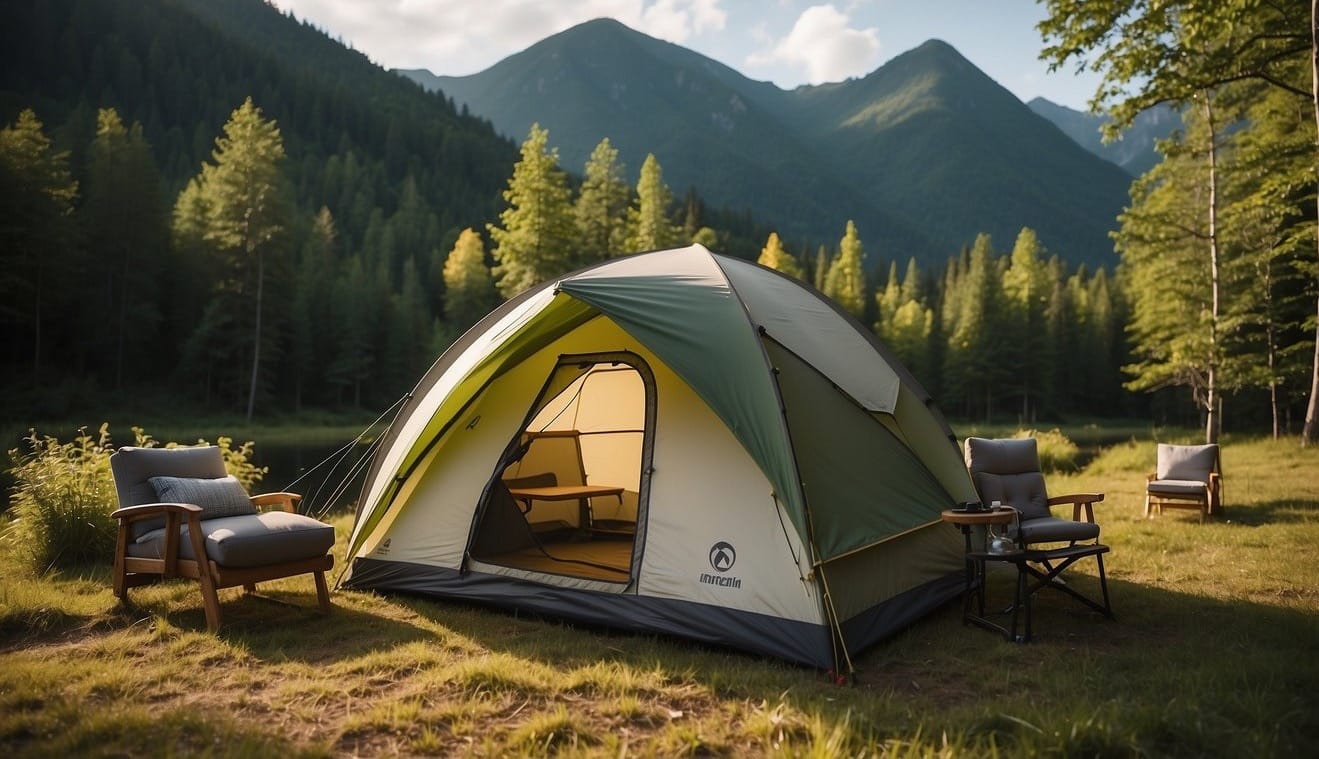
Tent camping is rapidly evolving with advancements in technology and design. These advancements enhance your outdoor experience by combining comfort, convenience, and efficiency.
Emerging Technologies and Designs
Roof Top Tents: Your adventure on the road is now more comfortable with roof-top tents that easily attach to the top of your vehicle. This design provides a sturdy platform above the ground and can be a game-changer for car camping.
- Snow Peak Alpha Breeze: The Alpha Breeze stands out with its dome shape and is noteworthy for its breathability and aerodynamic profile. These features optimize airflow while remaining resilient in windy conditions.
Backpacking Tents: For those of you who venture into the backcountry, the backpacking tents of today are more ultralight and durable. These tents are designed to be compact, with materials that offer an excellent balance of weight-to-strength ratio.
- MSR Habiscap: The MSR Habiscap is known for its reliability even in challenging environments.
Dome Shape Tents: The classic dome shape is continuously being refined. Modern materials and pole configurations enhance the structural integrity and space efficiency, making it a mainstay in both backpacking and car camping scenarios.
Car Camping Tents: Your car camping experience gets a boost with tents that provide ample space. Designs now include quick setup mechanisms and integrated lighting systems, making your stay in the great outdoors as cozy as your home.
- Innovations like Smart Tents: Popping up on the market are tents that incorporate technology for automation, weather updates, and internal climate control. These features ensure you stay connected and comfortable in any setting.
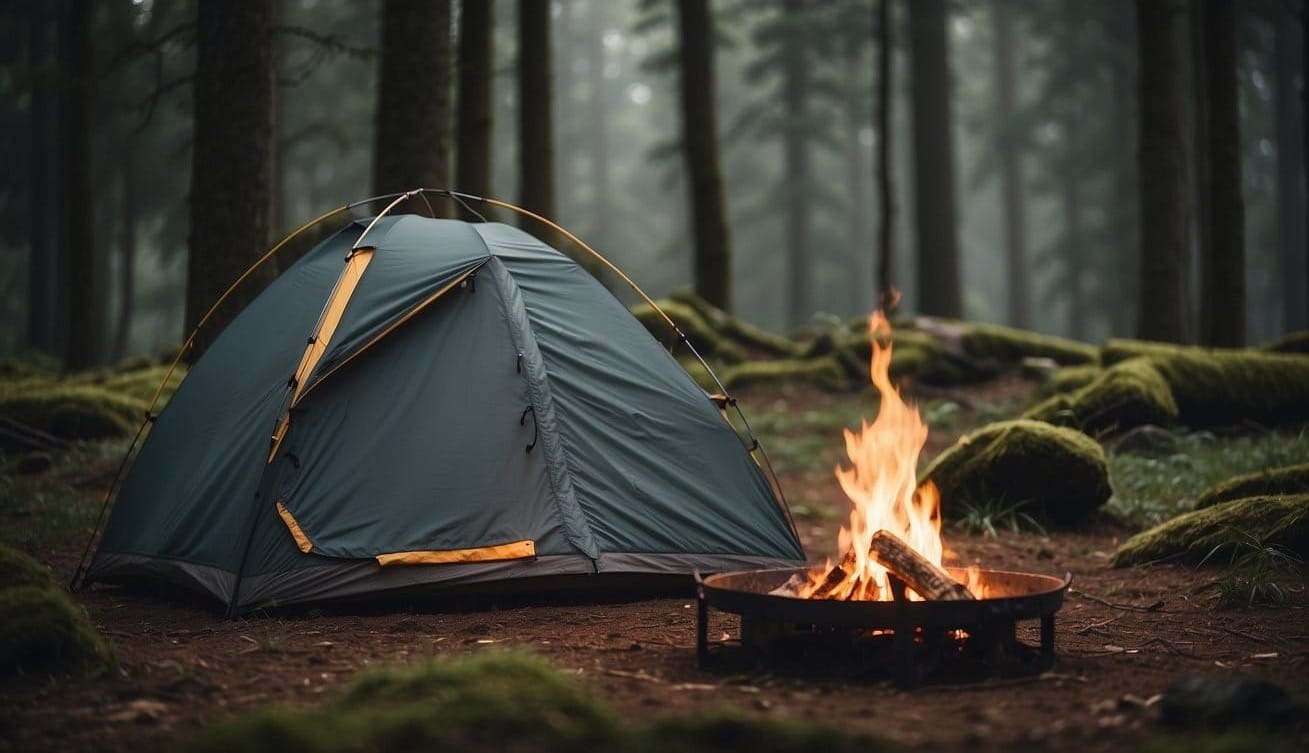
Frequently Asked Questions
What should I look for when choosing a tent camping site?
You should assess the site's safety, amenities, and location relative to water sources and potential hazards. Look for level ground to set up your tent comfortably and consider privacy and the views if they're important to you.
What are the essential items to bring for tent camping?
Essential items include a durable tent, a suitable sleeping bag for the weather, a sleeping pad or mattress, a reliable lighting source, food supplies, and a method of water purification. Also, don't forget tools for starting a fire and a first-aid kit.
How do I ensure my safety while camping in a tent?
To ensure safety, familiarize yourself with the local wildlife and weather patterns. Keep food stored and out of the tent to avoid attracting animals, and have a communication plan in case of emergencies. Always inform someone about your trip details before you leave.
What are the best practices for environmental conservation during tent camping?
Practice 'Leave No Trace' principles by minimizing campfire impacts, disposing of waste properly, and respecting wildlife. Use established trails and camping sites, and avoid disturbing the natural environment.
How can I find tent camping sites near my location?
You can search online for local camping sites, use dedicated camping apps, or check with national or state park services. Local camping forums and outdoor enthusiast groups can also be helpful resources.
What are the common amenities provided at tent camping sites?
Common amenities often include restrooms, potable water, fire pits or grills, picnic tables, and trash disposal facilities.
Some sites may also offer shower facilities, electrical outlets, and camp stores for basic supplies.
